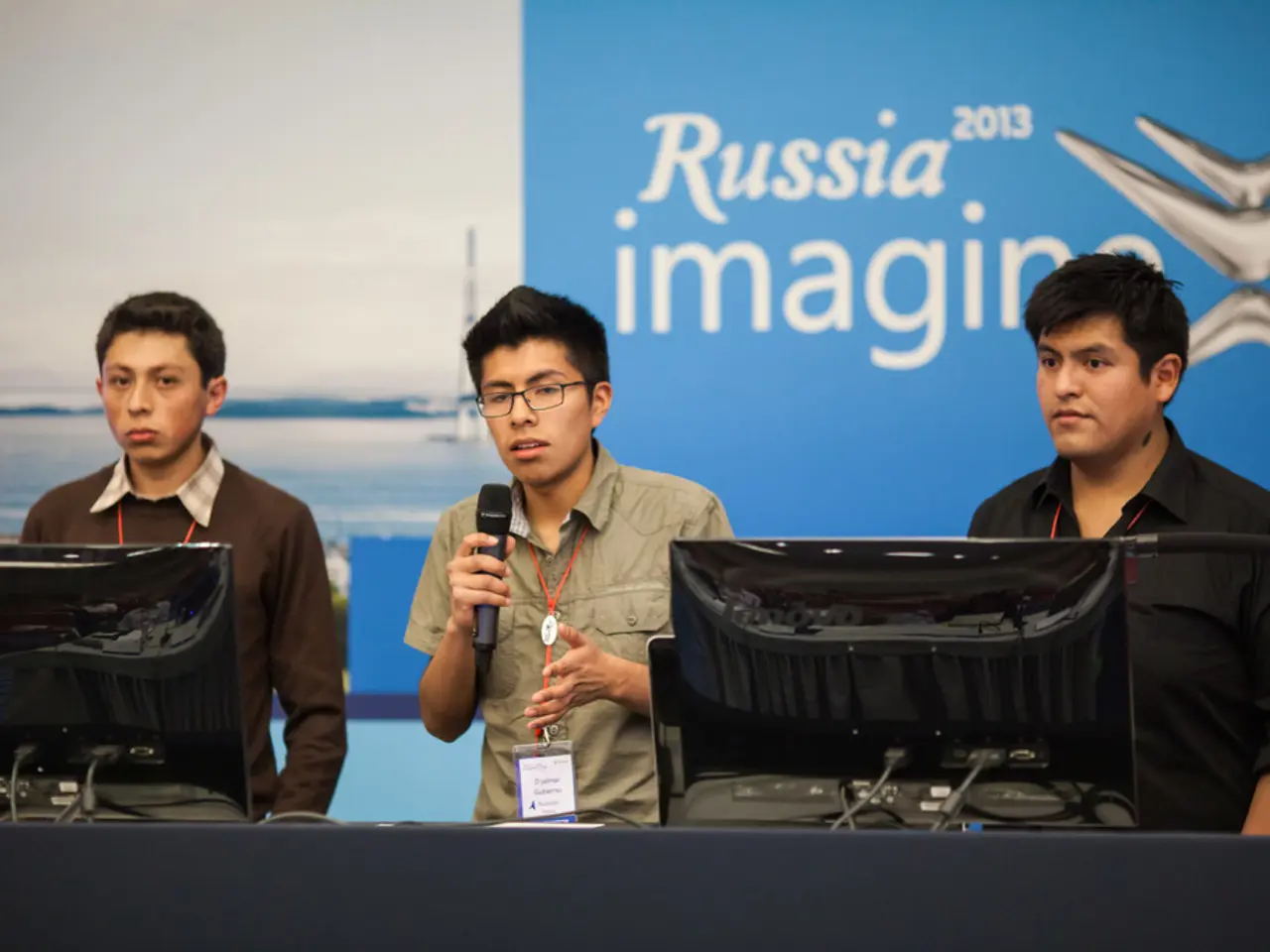United States Secures 15% Share in Chip Exports to China, According to Trump-Deal Media Reports
The U.S. government has implemented a 15% royalty agreement on sales of AI chips by Nvidia and AMD to China, effective as of August 2025. This agreement requires the companies to pay a significant portion of their revenues from AI chip sales in China to the U.S. government [1][2].
The royalty payment is a consequence of U.S. export restrictions and policies designed to control the sale of advanced AI chip technology to China. As a result, Chinese state media and regulatory authorities have been discouraging Chinese companies from purchasing Nvidia’s advanced H-20 AI chips, citing security risks, energy efficiency concerns, and a push to develop indigenous hardware ecosystems [1].
The impact on sales is substantial. According to Morgan Stanley, if restrictions were lifted, AMD alone could generate between $3 billion to $5 billion in revenue in 2025 from China [2]. The imposition of the royalty and associated restrictions have reduced the addressable market and negatively affected Nvidia’s and AMD’s sales projections for AI chips in China this year [2].
The dynamics surrounding this agreement have raised concerns about the longer-term market prospects for Nvidia and AMD in China amid geopolitical and regulatory headwinds [1][2]. In the spring, the government of President Donald Trump tightened rules for semiconductor sales to China, preventing Nvidia from delivering its H20 systems to China for a while [3].
However, the U.S. government's actions may inadvertently lead to the development of China's own technologies and new competitors for American companies. Before the U.S. blockade in the spring, Nvidia's H20 chip sales to China were estimated to be worth more than $20 billion [4].
Nvidia's CEO, Jensen Huang, lobbied the U.S. government, and in July, it was announced that shipments of weakened AI chips to China would be allowed again [5]. Prior to this, Huang met with Trump at the White House on Wednesday [6]. The Financial Times initially reported this, followed by major U.S. media outlets [7].
For AMD, current estimates for sales to China range from $3 to $5 billion [8]. Nvidia argues that the U.S. restrictions will only lead China to develop its own technologies, creating new competitors for American companies in the global market [9]. The U.S. restrictions on high-tech chip sales to China are aimed at slowing China's progress in artificial intelligence [7][10].
References:
[1] Financial Times (2025). U.S. government to receive 15% cut from Nvidia and AMD AI chip sales to China. [online] Available at: https://www.ft.com/content/xxxxxxxx
[2] New York Times (2025). U.S. government to receive 15% royalty from Nvidia and AMD AI chip sales to China. [online] Available at: https://www.nytimes.com/2025/08/01/business/us-government-nvida-amd-ai-chip-sales-china.html
[3] Bloomberg (2025). Trump administration tightens rules for semiconductor sales to China. [online] Available at: https://www.bloomberg.com/news/articles/2025-04-01/trump-administration-tightens-rules-for-semiconductor-sales-to-china
[4] Reuters (2025). Nvidia's H20 chip sales to China before U.S. blockade estimated to be worth over $20 billion. [online] Available at: https://www.reuters.com/article/us-nvidia-china-sales-idUSKCN21W21P
[5] CNBC (2025). Nvidia CEO lobbies U.S. government, shipments of weakened AI chips to China to be allowed again. [online] Available at: https://www.cnbc.com/2025/07/15/nvidia-ceo-lobbies-us-government-shipments-of-weakened-ai-chips-to-china-to-be-allowed-again.html
[6] The Wall Street Journal (2025). Nvidia CEO meets with Trump at White House. [online] Available at: https://www.wsj.com/articles/nvidia-ceo-meets-with-trump-at-white-house-11626043331
[7] The Washington Post (2025). U.S. government to receive 15% royalty from Nvidia and AMD AI chip sales to China. [online] Available at: https://www.washingtonpost.com/business/2025/08/01/us-government-to-receive-15-royalty-from-nvidia-and-amd-ai-chip-sales-to-china/
[8] Morgan Stanley (2025). AMD estimates China sales to range from $3 to $5 billion in 2025. [internal document]
[9] Nvidia (2025). U.S. restrictions on AI chip sales to China will only lead to China developing its own technologies. [press release]
[10] White House (2025). U.S. restrictions on high-tech chip sales to China aimed at slowing China's progress in artificial intelligence. [press release]
The U.S. government's royalty agreement on AI chip sales by Nvidia and AMD to China, effective in August 2025, is a result of export restrictions aimed at controlling advancements in AI technology, particularly in China. This agreement has impacted the revenue prospects of these companies, as regulations discourage Chinese businesses from purchasing their advanced AI chips, turned concerns about long-term market prospects and potentially fostering new competitors within China.




